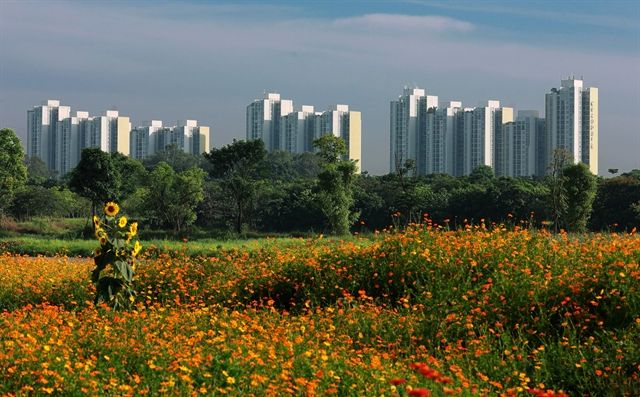
More regulations for developing green cities
Latest
| TIN LIÊN QUAN | |
| Vietnamese green mango exports to Australia double in H1 | |
| Hoi An among world’s top 25 cities by US travel magazine | |
 |
| Part of Ecopark - a model of the green urban area in Vietnam. (Photo: VNA) |
The draft revised decree on Investment, Management of urban development would replace the current one from seven years ago.
According to the Ministry of Construction, Decree 11/2013/ND-CP regulates investments in urban development but does not have any specific policy projects that apply advanced models like smart urban areas, environmentally-friendly urban areas.
This leaves investors of urban development projects still confused over implementing such advanced models and needs the Government’s assistance.
Until now, investors self-announce their projects meet the criteria of green buildings or biological urban areas without an inspection, verification from functioned agencies, which, in some cases, affect the rights and benefits of house buyers in those projects.
The ministry has found it necessary to issue regulations to further promote the diversification of advanced urban development models.
Under the draft revised decree, the ministry would add regulations on requirements to identify urban areas’ types including green growth urban areas, biological urban areas, smart urban areas, climate-resilient urban areas, energy-efficient buildings and environmentally friendly buildings.
The draft would also include regulations on incentives for projects that develop such advanced urban development models.
In Vietnam, rapid urbanization has appeared since 1986 when the country started its Doi moi (Renewal) policies with sweeping liberalization in all sectors. The country had about 500 urban areas in 1990, then 646 urban areas in 2000 and now, more than 800 urban areas.
The current urbanization rate is about 37.5 percent, urban areas contribute about 70 percent of the country’s gross domestic product.
Currently, 86 percent of people living in urban areas can access clean water. About 87.5 percent of solid waste in urban areas is collected and treated. Street lights are available in all main roads and 90 percent of branch roads and more than 65 percent of hamlet roads.
Urban areas are usually hubs of economy, politics, culture, education, healthcare, tourism or entertainment in regions or of the country. Economic activities in urban areas also help create jobs and make use of redundant labor in rural areas.
However, Vietnam’s urban areas face challenges including low growth quality, poor infrastructure and urban link as well as modest urban management.
The urban infrastructure development has failed to catch up with the urbanization pace, resulting in problems like traffic congestion, traffic accidents, or environmental pollution.
Due to the lack of standards for green urban areas, some people misunderstand that green urban areas are simply those with many trees.
General Secretary of Vietnam Real Estate Association Do Viet Chien said that trees are just one factor that makes an urban area green, chinhphu.vn reported.
“A green urban area must control its waste, recycle the waste, use clean energy, use energy efficiently and use environment-friendly materials,” he says, adding that the areas are also operated and managed in manners that are friendly to the environment.
Standardized green urban areas will help improve living standards for local residents and minimize negative impacts on the environment and avoid waste to natural resources.
Developing modern sustainable urban areas is a trend of global real estate but the conception of modern urban areas is still controversial, according to Chien.
In Vietnam, Hanoi and many other cities are expanding but the way they have been urbanized affected the quality of the living conditions, creating arising problems in the environment, planning, infrastructure and public services.
“The urbanization is happening too fast while relevant regulations/legal framework or policies on urban development are failing to catch up,” Chien said.

| Eased regulations set up EVFTA agriculture benefits: Experts Though Vietnam’s agricultural sector will receive attention from the forthcoming EU-Vietnam Free Trade Agreement, it needs to overcome some challenges to enjoy optimum preferential treatment. |

| Vietnam-US trade relations continue developing in a harmonious and sustainable manner: Spokesperson Spokesperson Le Thi Thu Hang replied to reporters’ questions regarding the US Department of Commerce’s move to investigate plywood imported from Vietnam. |

| Huge potential for developing resort property market post-COVID-19 pandemic With many property experts considering Vietnam a tourist paradise, resort real estate can serve as a gold mine for investors, although there are many hurdles ... |
























